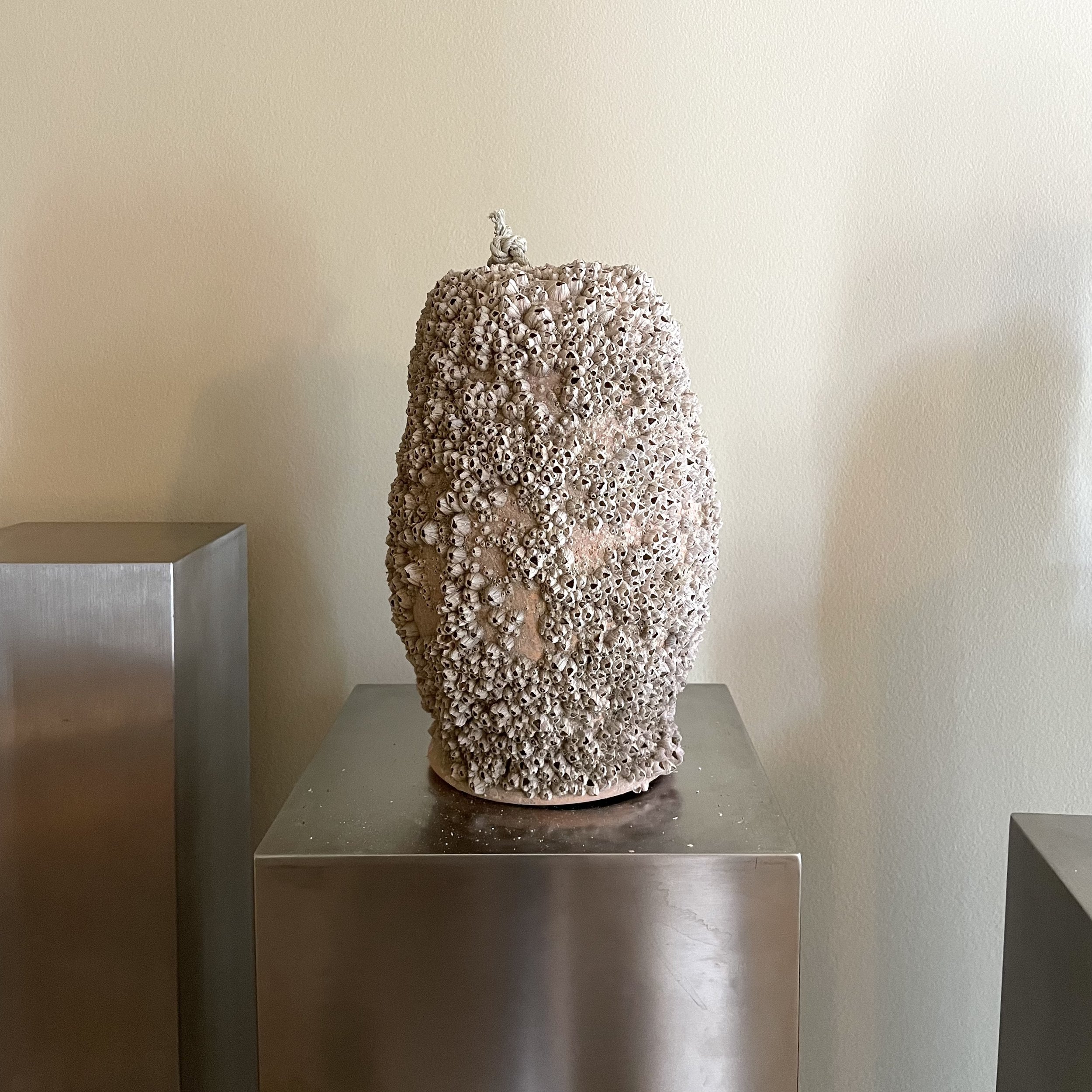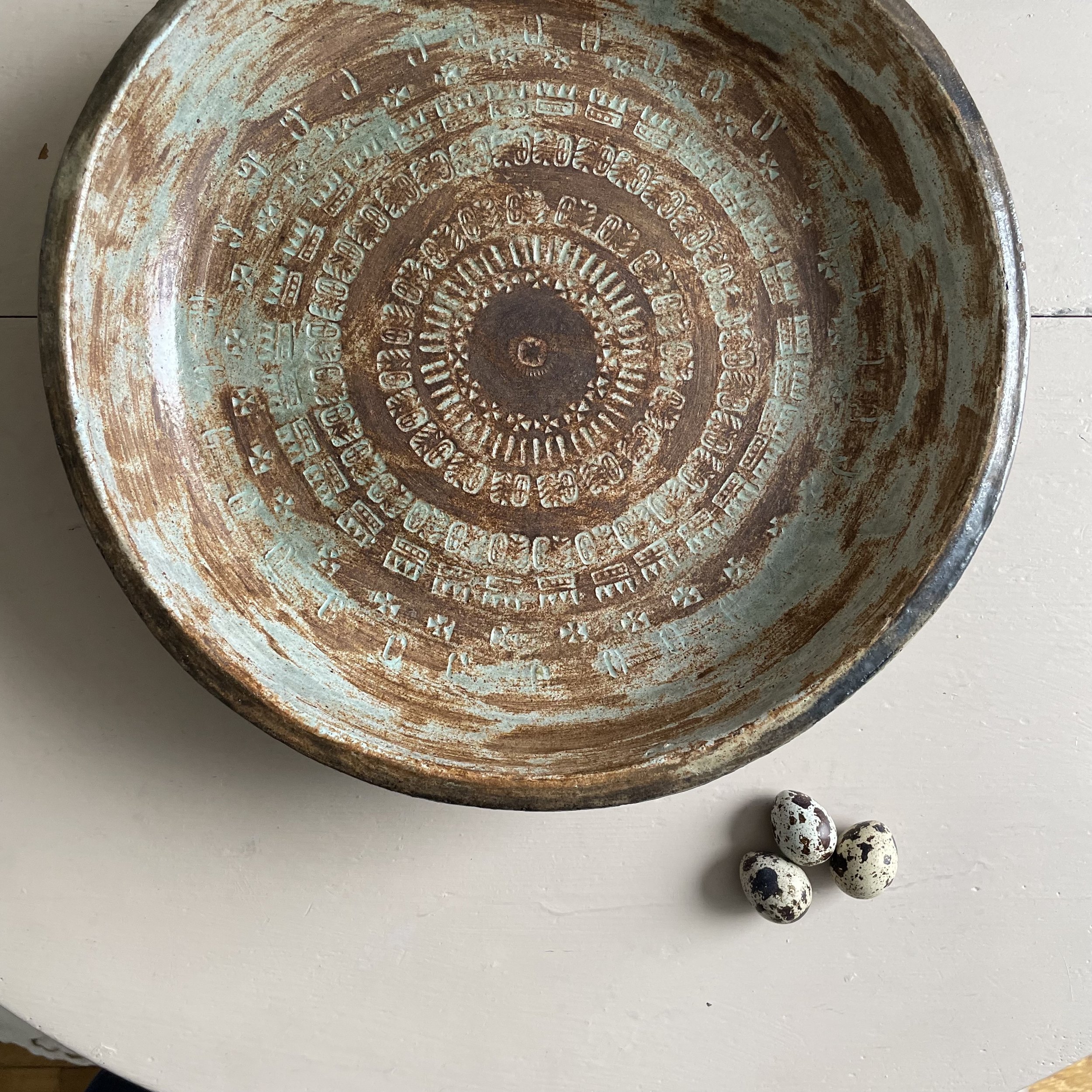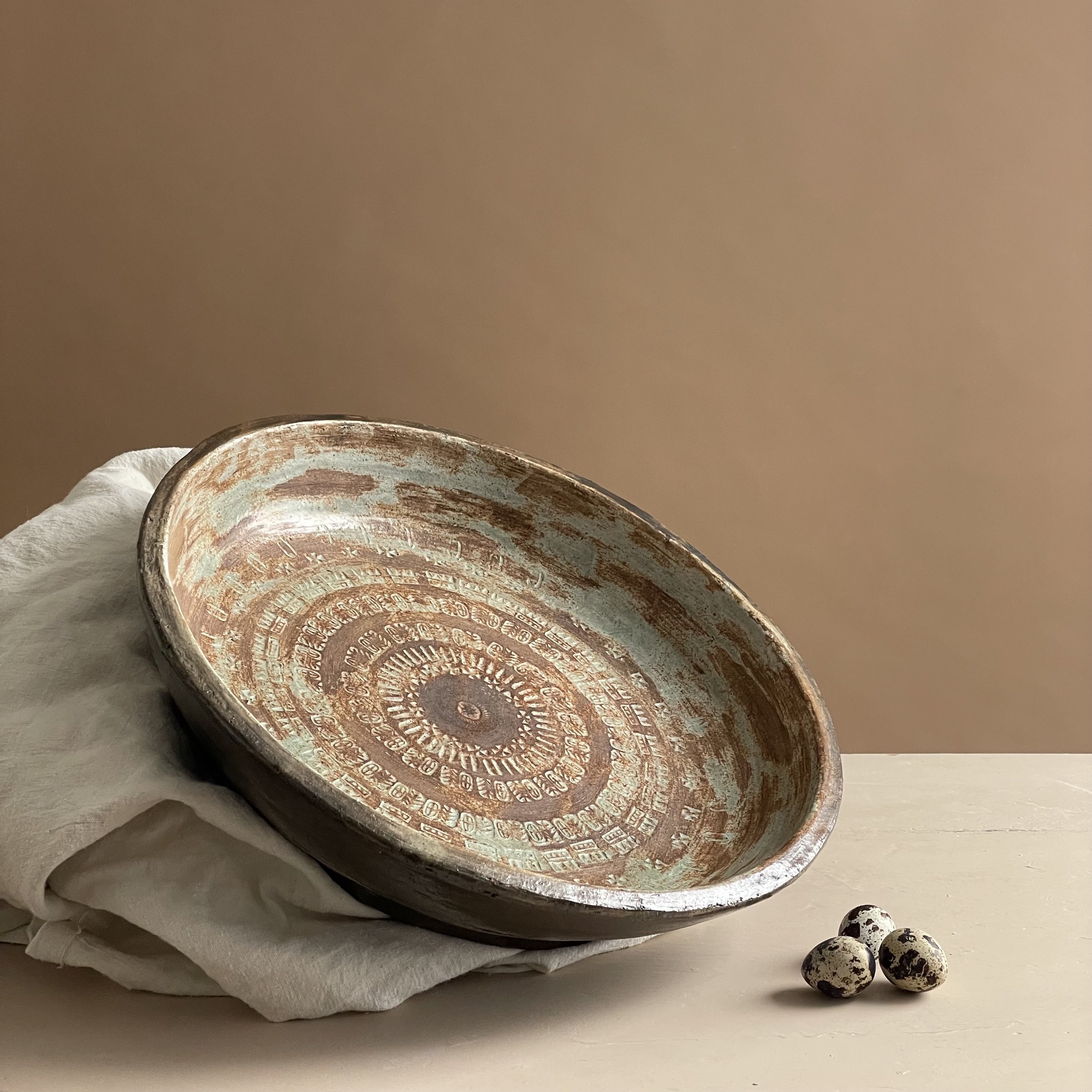Fragment de coquille, XVIIème siècle
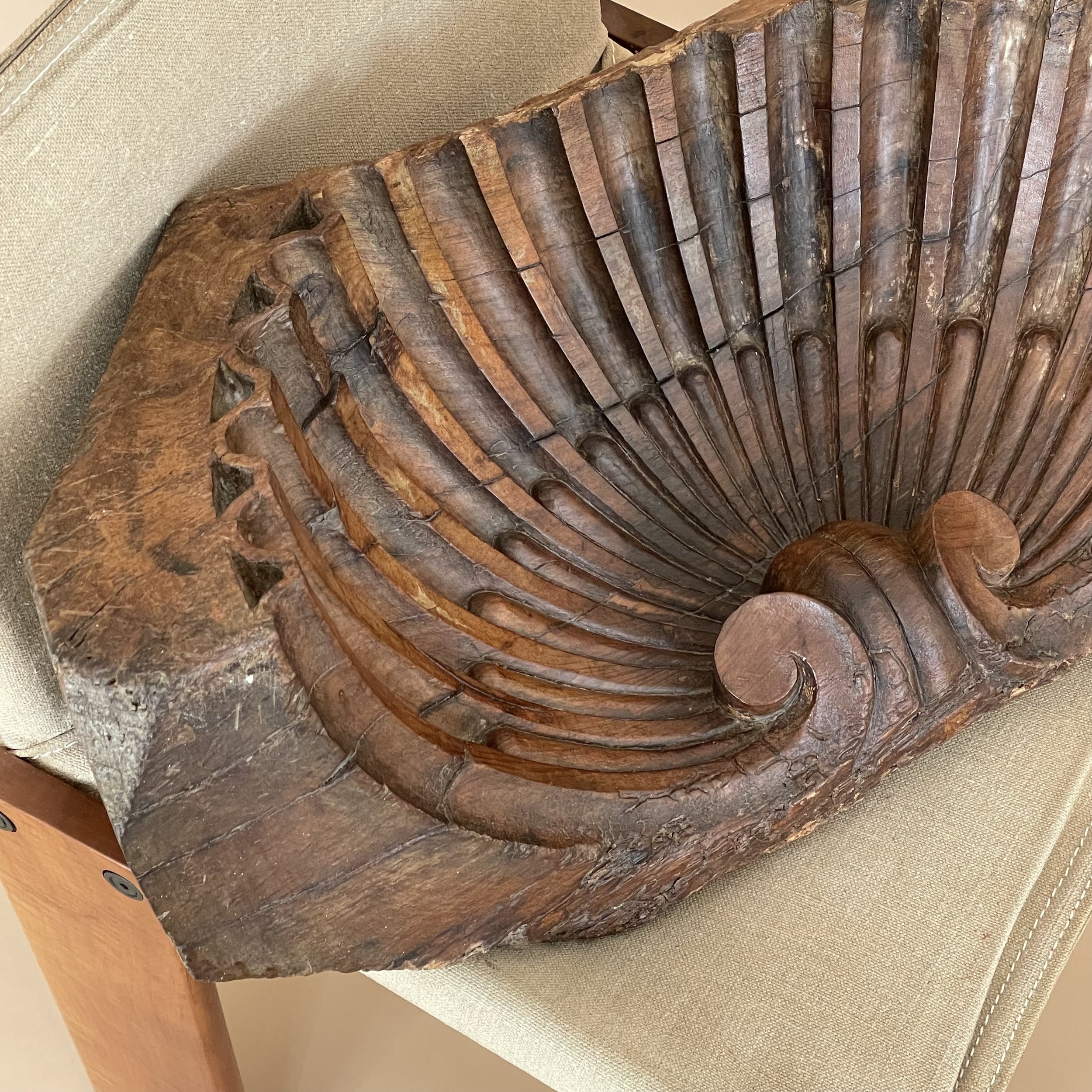
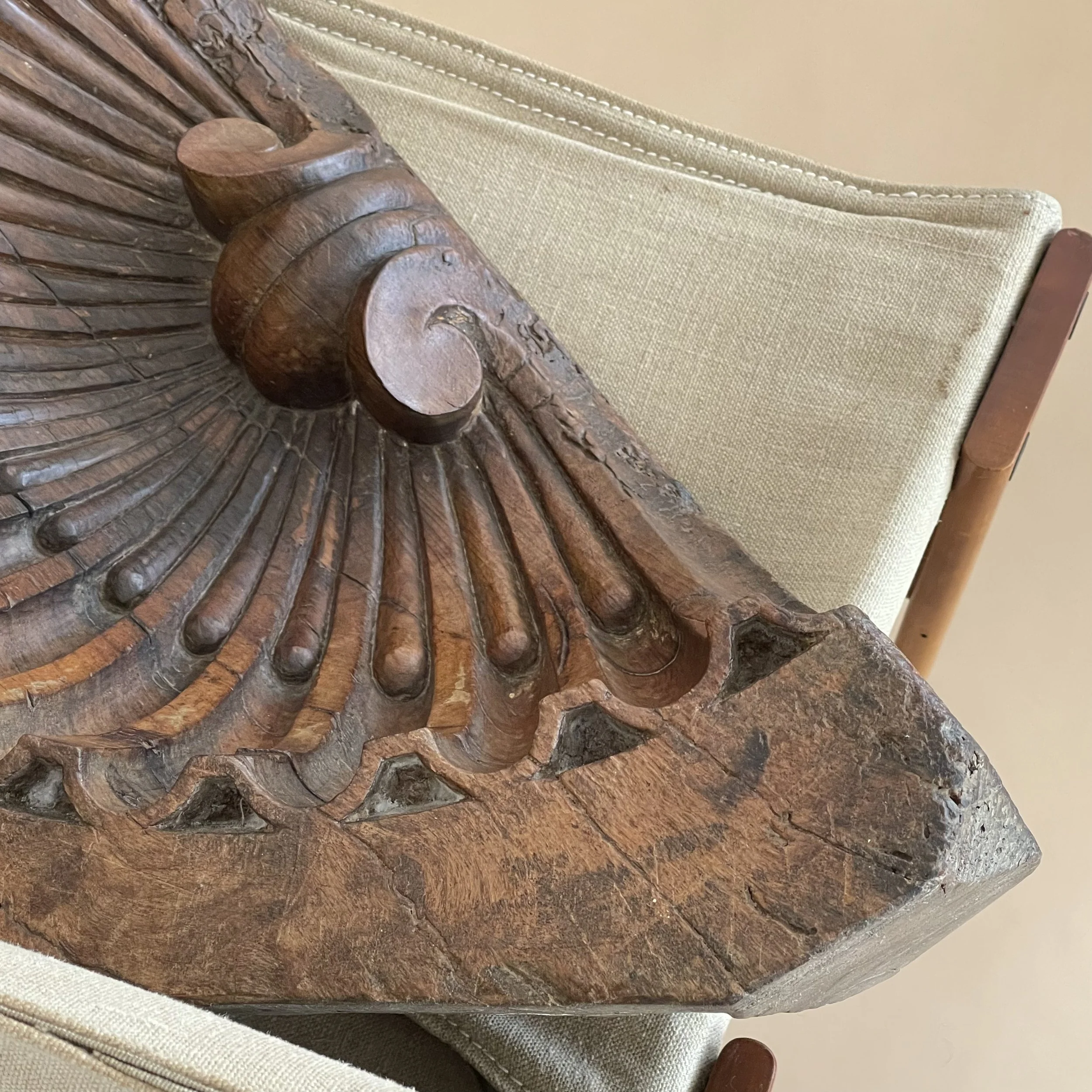
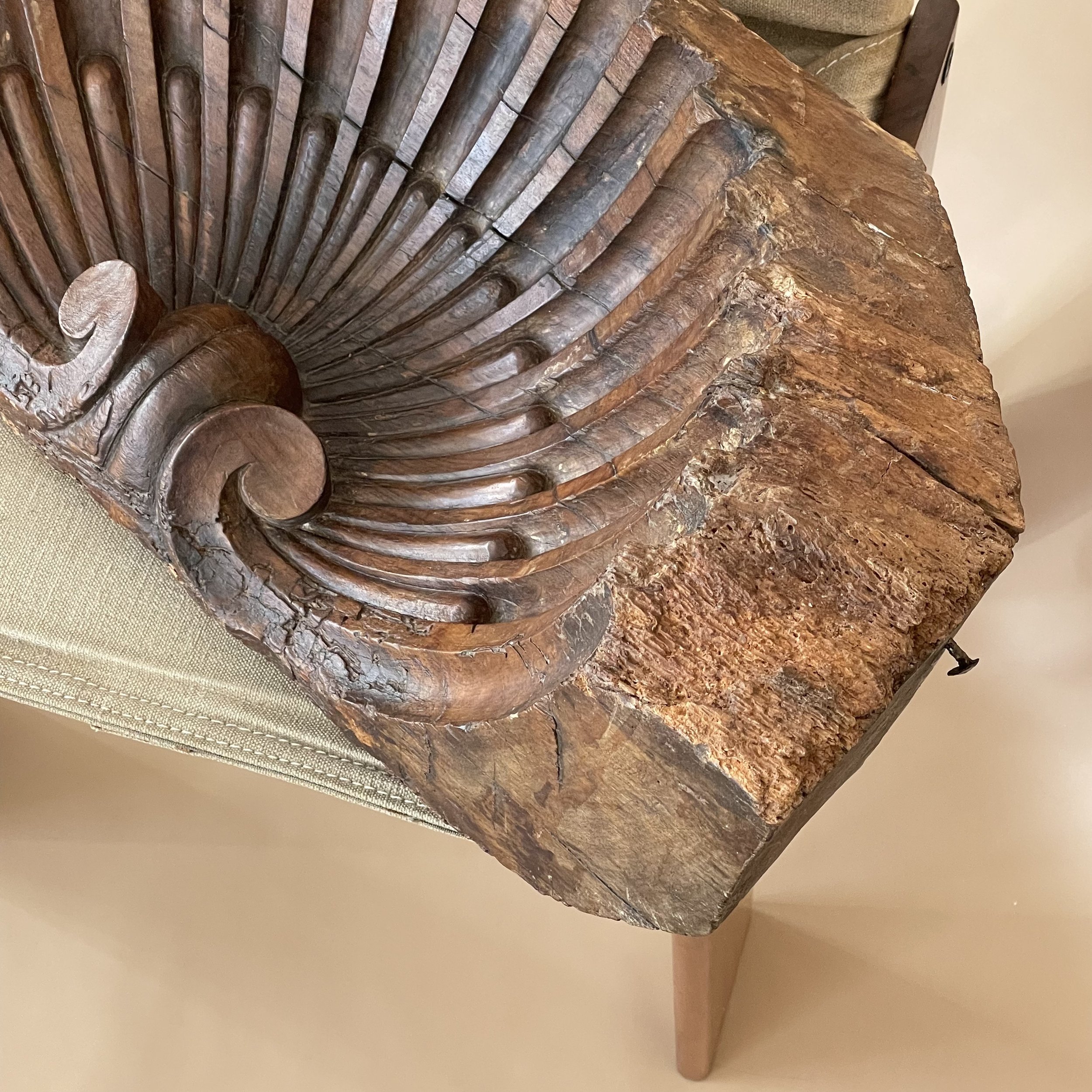
Fragment de coquille, XVIIème siècle
Fragment de coquille architecturale de niche en noyer
France
XVIIème
H 27 x L 66 x P 27 cm
Bon état général, usures visibles en bordure
Fragment of a walnut niche architectural shell
France
17th century
H 27 x W 66 x D 27 cm
Good condition, visible wear on the edge
Objet marquant le pèlerinage accompli, la coquille correspond à des symboles utilisés dès la Préhistoire et l'Antiquité : coquille dans les tombes (symbole de renaissance, de résurrection), talisman, coquille évoquant les eaux où elle se forme, symbole de la fécondité propre à l'eau, symbole d'amour (telle Vénus sortie de sa coquille, légende peut-être issue des coquilles perlières) et de bonne chance, symbole de purification spirituelle (d'où les cuve de fonts baptismaux en forme de coquille). Selon le Codex Calixtinus, la coquille est associée depuis le XIIIe siècle aux « bonnes œuvres » : « les deux valves du coquillage représentent les deux préceptes de l'amour (...), à savoir aimer Dieu plus que tout et aimer son prochain comme soi-même ».
L'origine de la coquille de Saint-Jacques-de-Compostelle est probablement issue de cette symbolique antique mais renvoie aussi à plusieurs légendes compostellanes : cendres du saint arrivées à Compostelle dans une coquille ; un chevalier sauvé de la noyade par l'intercession du saint, au moment où passait le bateau ramenant sa sépulture de Jérusalem, et ressorti de l'eau couvert de coquilles.
Cette ornementation est parfois confondue avec la « coquille Renaissance » qui décore des portails, murs ou niches d'architecture, cette coquille étant un motif en demi-coupole très répandu dans l'architecture et le mobilier de style Renaissance et néo-Renaissance.
En architecture, la coquille est la voûte parfois décorée de cannelures et formant la partie supérieure d'une niche en plein cintre. On y voit souvent des personnages mythologiques ou religieux debout dans des niches dont le haut se termine en coquille. Au XVIIème siècle, la coquille reste régulière, creuse ou bombée. Elle coiffe les personnages et les mascarons. Sous Louis XIV, elle est plate et représentée vue de dos, parfois surmontée d'un fleuron. Sous la Régence, elle s'ajoure parfois de trous concentriques. Le style Louis XV a donné à la coquille une grande importance dans la décoration. Elle devient asymétrique, ajourée et fortement déchiquetée prenant des formes de rocailles. Elle disparaît pratiquement dans le style néoclassique comme le style Louis XVI.
Object marking the accomplished pilgrimage, the shell corresponds to symbols used since Prehistory and Antiquity: shell in the tombs (symbol of rebirth, resurrection), talisman, shell evoking the waters where it is formed, symbol of the fecundity proper to water, symbol of love (such as Venus taken out of its shell, legend perhaps resulting from the pearl shells) and good luck, symbol of spiritual purification (from where the tanks of baptismal fonts in the shape of shell). According to the Codex Calixtinus, the shell has been associated since the 13th century with "good works": "the two valves of the shell represent the two precepts of love (...), namely to love God more than anything else and to love one's neighbor as oneself".
The origin of the shell of Santiago de Compostela is probably derived from this ancient symbolism but also refers to several Compostellan legends: ashes of the saint arrived in Compostela in a shell; a knight saved from drowning by the intercession of the saint, as the boat bringing back his burial from Jerusalem passed by, and emerged from the water covered with shells.
This ornamentation is sometimes confused with the "Renaissance shell" which decorates portals, walls or architectural niches, this shell being a half-dome motif very common in Renaissance and neo-Renaissance architecture and furniture.
In architecture, the shell is the vault, sometimes decorated with fluting, that forms the upper part of a semi-circular niche. One often sees mythological or religious figures standing in niches whose top ends in a shell. In the 17th century, the shell remained regular, hollow or domed. It tops the characters and the mascarons. Under Louis XIV, it is flat and represented seen from behind, sometimes topped by a finial. Under the Regency, it is sometimes added with concentric holes. The Louis XV style gave the shell a great importance in the decoration. It becomes asymmetrical, openwork and strongly jagged taking the form of rocaille. It practically disappears in the neoclassical style as the Louis XVI style.







